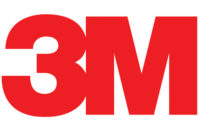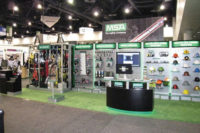Fastenal reports 20% increase in Q3 sales
Vending machine installations increase significantly

During the first nine months of 2011, Fastenal opened 94 new stores (the company opened 90 new stores in the same period of 2010).The 94 new stores represent an increase of 3.8% since December 31, 2010. (Fastenal had 2,490 stores on December 31, 2010.) Fastenal had 14,927 employees as of September 30, 2011, an increase of 12.4% from the 13,285 employees on December 31, 2010.
The growth in 2010, and into 2011, generally continues the improving trend we saw in the latter half of 2009. The negative growth in 2009 relates to the general economic weakness in the global marketplace. The change in currencies in foreign countries (primarily Canada) relative to the United States dollar improved our daily sales growth rate by 0.9% during the first nine months of 2011.
The 2011 and 2010 growth was more pronounced in Fastenal’s industrial production business (this is business where the company supplies products that become part of the finished goods produced by its customers) and less pronounced in the maintenance portion of its manufacturing business (this is business where Fastenal supplies products that maintain the facility or the equipment of its customers engaged in manufacturing).
The 2009 contraction was more severe in Fastenal’s industrial production business and less severe in the maintenance portion of its manufacturing business.
New strategy
In April 2007 Fastenal disclosed its intention to alter the growth drivers of its business. For most of the preceding ten years, the company used store openings as the primary growth driver of its business (the historical rate was approximately 14% new stores each year). As announced in April 2007, Fastenal began to add outside sales personnel into existing stores at a faster rate than historical patterns.
Fastenal funded this sales force expansion with the occupancy savings generated by opening stores at the rate of 7% to 10% per year. The goal was four-fold: (1) to continue growing business at a similar rate with the new outside sales investment model, (2) to grow the sales of the average store to $125 thousand per month in the five-year period from 2007 to 2012, (3) to enhance the profitability of the overall business by capturing the natural expense leverage that has historically occurred in existing stores as their sales grow, resulting in a growth of pre-tax earnings to 23% of net sales by 2012, and (4) to improve the performance of business due to the more efficient use of working capital (primarily inventory) as our average sales volume per store increases.
The economic weakness that dramatically worsened in the fall of 2008 and continued into 2009 caused Fastenal to alter the “pathway to profit” in 2009. These changes centered on two aspects (1) temporarily slowing new store openings to a range of 2% to 5% per year, and (2) temporarily stopping headcount additions except for new store openings and for stores that are growing.
During 2010, Fastenal modified its thought process around the “pathway to profit” in two regards: (1) with a structurally lowered cost structure and improved gross margins, the company concluded it could hit its profitability target with average store sales of $100 - $110 thousand per month by 2013; and (2) Fastenal decided to hire fewer store-based employees and instead added resources focused on specific sales opportunities, such as national accounts personnel and dedicated sales specialists (manufacturing, government, industry focused, and industrial vending solutions).
During the first nine months of 2011 and 2010, Fastenal closed 18 and seven stores, respectively. Fastenal has closed 52 stores in its 40+ year history.
Vending machine installations
The company has made significant progress in the development of automated solutions (industrial vending) for customers. Fastenal has installed more than 12,000 vending machines in the first three quarters of 2011. That compares to about 6,000 installed in all of 2010 and less than 2,000 installed in 2009.
Looking for a reprint of this article?
From high-res PDFs to custom plaques, order your copy today!








